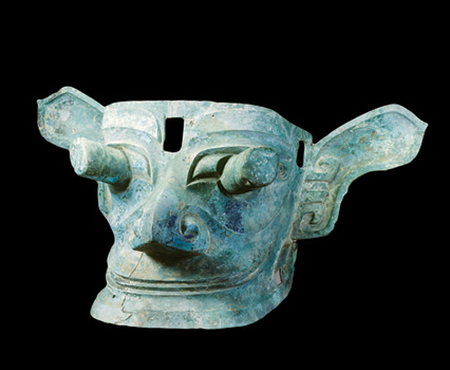
Continuing through March 15, 2015
China continues to surprise with its archaeological finds. "China's Lost Civilization: The Mystery of Sanxingdui" is a medium-sized exhibition but a landmark. It features some 120 artifacts (and clearly marked replicas) of a Chinese culture that existed about 3,000 years ago, then was lost to history until thirty years ago. In 1986 construction workers came upon what turned out to be two pits at Sanxingdui, 24 miles outside Sichuan's capital of Chengdu — which eventually yielded a treasure of ancient jades, weapons, animal bones, and bronzes. This has triggered a rethinking of the Yellow River basin, 750 miles to the northeast, as the "cradle" of Chinese civilization. The Sanxingdui finds indicated a sophisticated culture with advanced bronze techniques and social/religious systems — though no writing.
Among the most spectacular of these finds were “masks” made of bronze, sometimes covered with a thin layer of gold, and several are included in the exhibition. These were like nothing that had been found in China before — they had large, protruding eyes and prominent noses. Some are so large they could not have been worn, but must have been carried or otherwise displayed during ceremonies. The same type of head is sometimes found atop a standing figure, whom seems to be holding something in his two hands. Given the position of the hands, it has been posited that these figures were holding a curved elephant tusk, long since disintegrated. The Sanxingdui culture clearly prized elephant tusks, and a photograph shows an area of the dig where there was a whole stack of them, piled high. In 2001 archaeological finds were made in Chengdu itself, at the Jinsha site, which may have been where the Sanxingdui culture ended. The Jinsha culture had similar objects and motifs but comes at a later time, and the “Sanxingdui” exhibition closes with some of them.
Published courtest of ArtSceneCal ©2015
